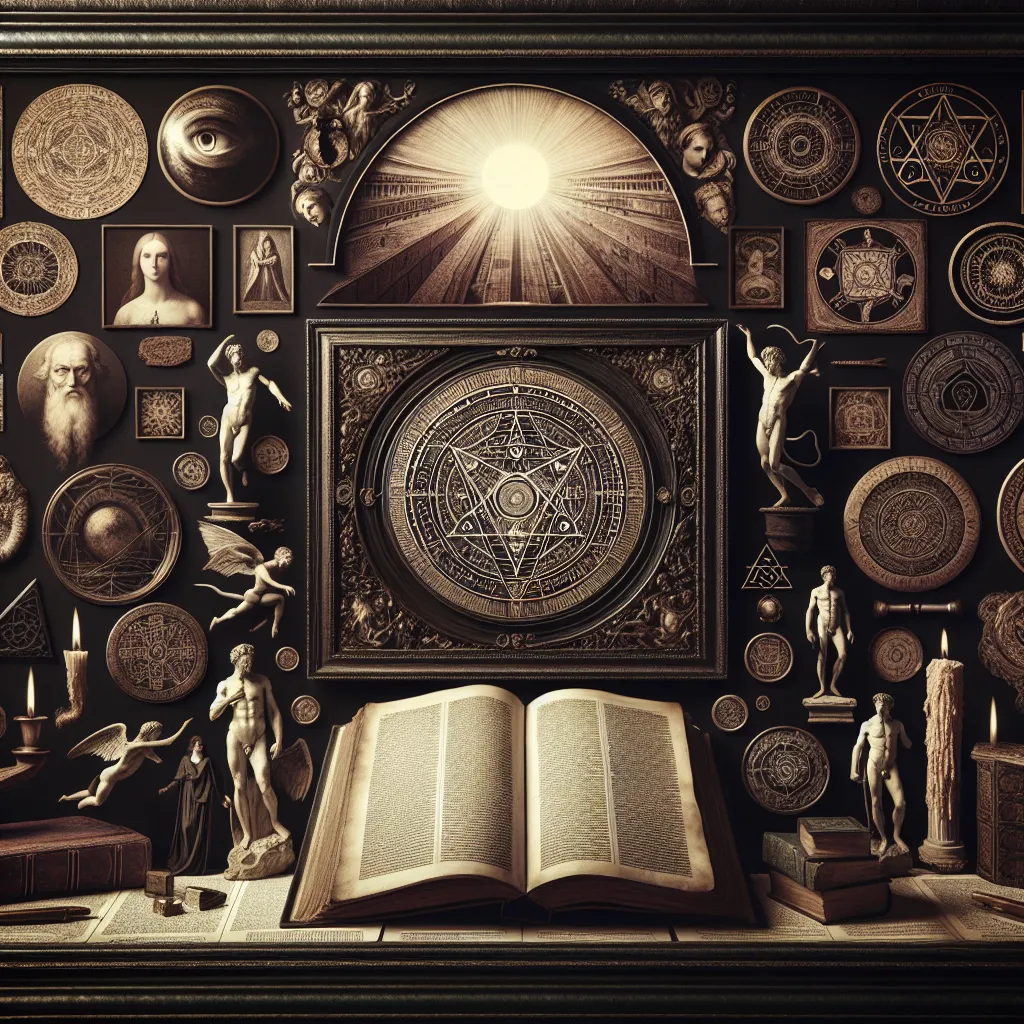
- Published on
- Authors

- Name
- You
The Book of the Law: Decoding Crowleys Revelations
Introduction
The Book of the Law (Liber AL vel Legis) is a cornerstone text in the world of occultism, penned by renowned magician Aleister Crowley in 1904. This work is said to have been dictated to Crowley by a supernatural entity named Aiwass over three consecutive days. It forms the bedrock of Thelema, a spiritual philosophy that proclaims, "Do what thou wilt shall be the whole of the Law."
Historical Context
To fully appreciate The Book of the Law, one must delve into the vibrant backdrop of its conception:
| Date | Event |
|---|---|
| 1875 | Birth of Aleister Crowley |
| 1904 | Reception of The Book of the Law in Cairo |
| 1920 | Establishment of the Abbey of Thelema in Cefalù |
| 1947 | Death of Aleister Crowley |
The Cairo Revelation
During Crowleys sojourn in Cairo, he and his wife, Rose Edith Kelly, performed an ancient Egyptian invocation. This ritual led to Rose recognizing the god Horus speaking through her. Crowley then connected with Aiwass, who delivered the text known as The Book of the Law.
The Structure of the Book
The Book of the Law is divided into three chapters, each purportedly communicated on a different day:
- Nuit: The infinite goddess of the starry sky, embodying the boundlessness of the cosmos.
- Hadit: The infinitely condensed point, representing the innermost essence of self.
- Ra-Hoor-Khuit: A manifestation of the god Horus, symbolizing power and force.
Decoding Key Verses
Some of the essential verses from the text provide profound spiritual and mystical insights:
Chapter I: Nuit
"Every man and every woman is a star."
This verse suggests the inherent divinity and unique essence within every individual, resonating with both quantum mechanics (the concept of individuality and distinct particles) and spiritual teachings (each souls uniqueness).
Chapter II: Hadit
"There is no law beyond Do what thou wilt."
This tenet encapsulates the libertarian essence of Thelema, advocating for the fundamental right to pursue one's true will. It intersects with philosophies of existential freedom and self-actualization.
Chapter III: Ra-Hoor-Khuit
"Fear not at all; fear neither men nor Fates, nor gods, nor anything."
Here, the text instills courage and an unwavering pursuit of one's will, akin to psychological principles of overcoming fear and achieving personal empowerment.
Advanced Science Meets Mystical Wisdom
Quantum Field Theory and Nuit
The boundless nature of Nuit can be paralleled with the infinite possibilities in quantum field theory, where every point in space-time is a potential particle source.
Singularity and Hadit
Hadit's representation as a singularity aligns with the scientific concept of singularities in black holes, where matter is infinitely dense.
Chaos Theory and Ra-Hoor-Khuit
Chaos theory's edge of predictability and the emergence of order from disorder can be likened to Ra-Hoor-Khuit's principle of thriving beyond fear, as it suggests growth and evolution from chaotic states.
Conclusion
The Book of the Law bridges the realms of advanced science and deep mystical wisdom, creating a rich tapestry for both material and spiritual exploration. Its verses encourage self-discovery, individual empowerment, and a harmonious existence within the cosmos. Understanding Crowleys work can inspire a profound transformation, uniting scientific inquiry and esoteric practices in the quest for enlightenment.
"Love is the law, love under will."
